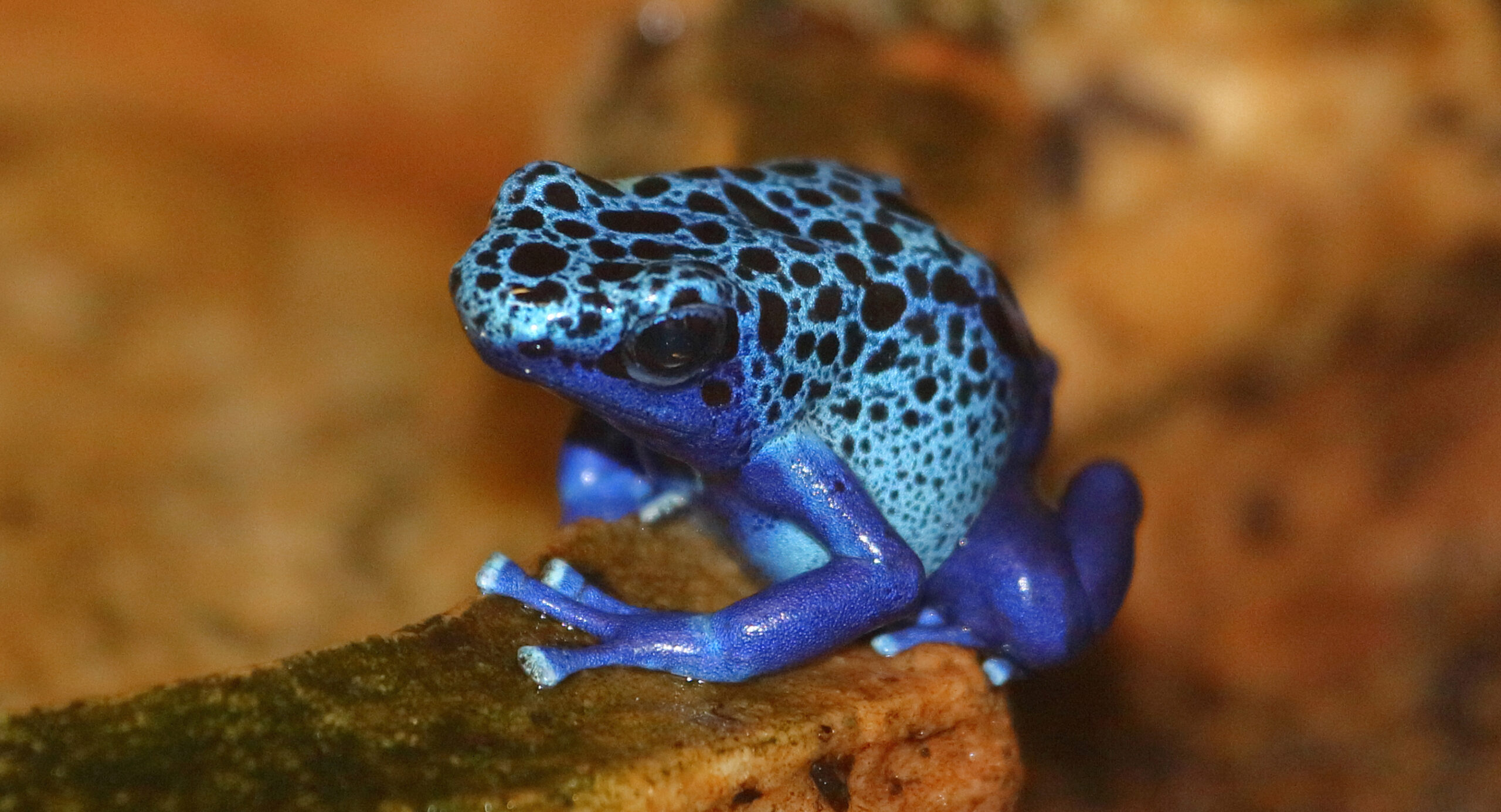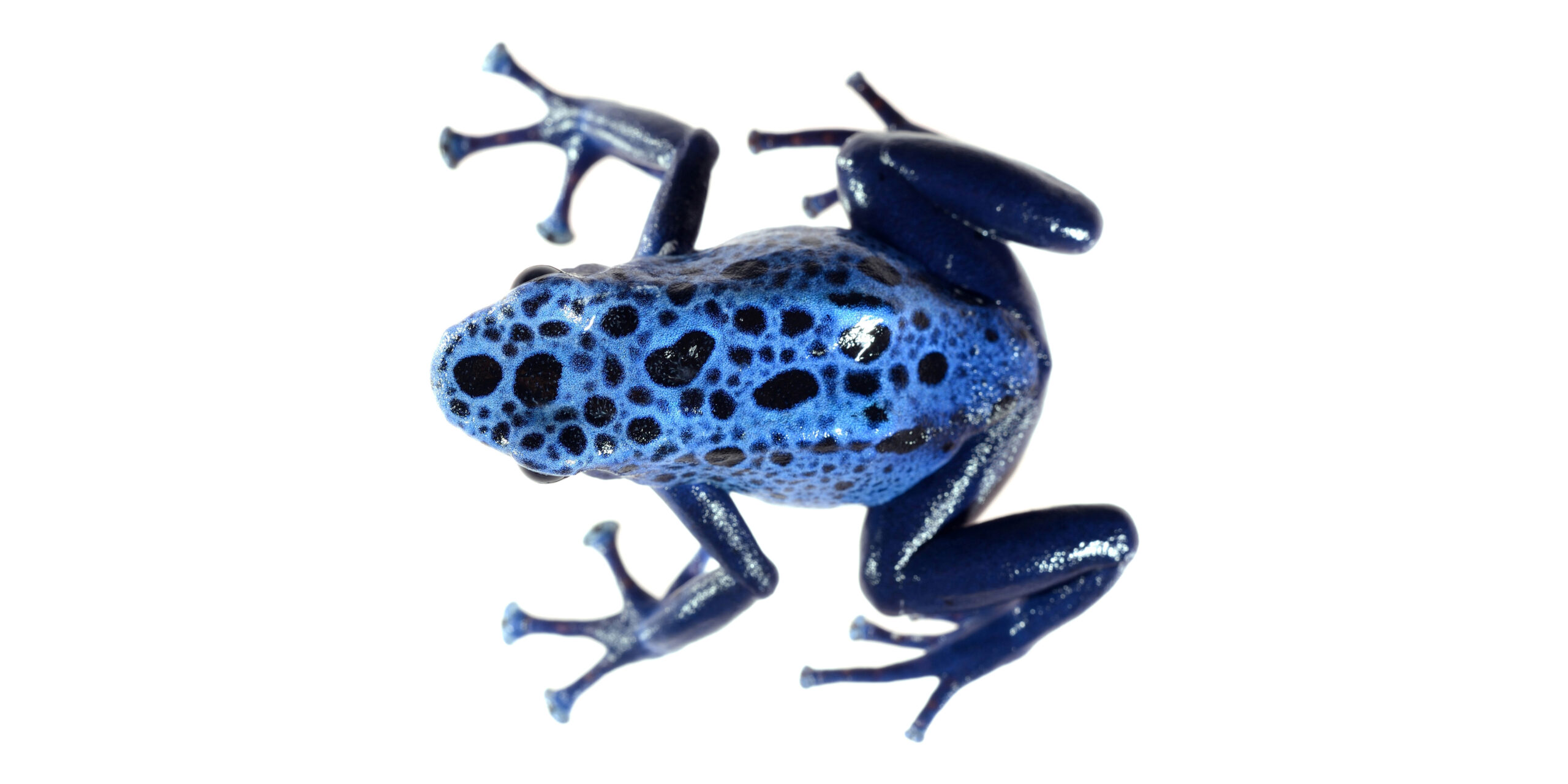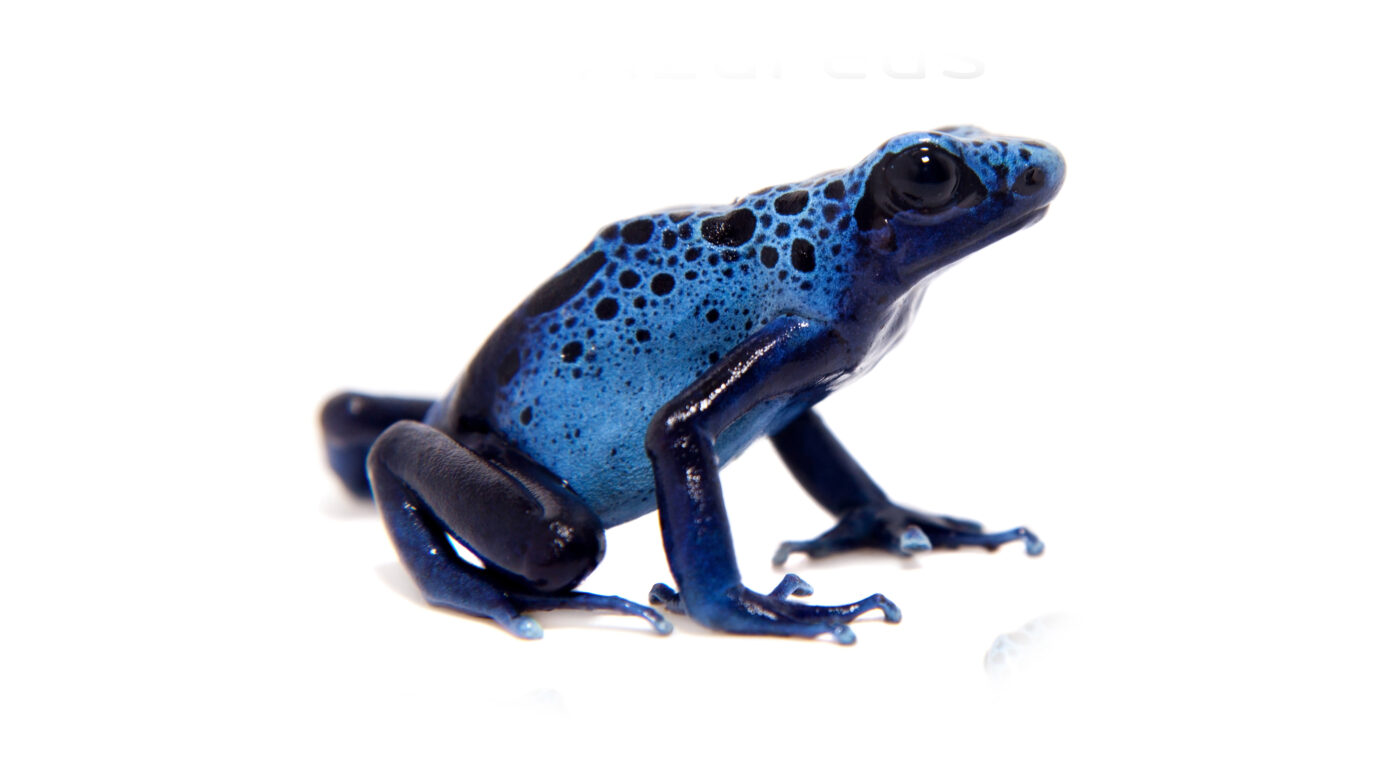Blue Poison dart frog, Dendrobates tinctorius Azureus, Adobe Stock, by Farinoza

PRESENTS
The Blue Poison Dart Frog
(Dendrobates azureus)
By Ayden Planker
The blue poison dart frog (Dendrobates azureus) is native to the savannas of the South American Republic of Suriname, where it is known by the indigenous population as the Okopipi.
The titular pigmentation of the blue poison dart frog is an aposematic trait, meaning that its bright colors evolved to ward off predators. This attribute is not without reason; like most dart frogs, the blue poison dart is highly toxic, so poisonous in fact that the family name of the dart frog is a reference to the indigenous use of their toxins for hunting. Remarkably, poison dart frogs are not believed to produce poison themselves. Instead, they collect poison through their diet, eating ants, beetles, and other mites and retaining their toxins. For this reason, blue poison dart frogs that reside in captivity often lack any strong toxicity.

Blauer Baumsteiger / Blue poison dart frog / Dendrobates tinctorius azureus, Adobe Stock, by Ludwig
Though their blue skin is one of their most notable features, the blue poison dart is host to several other traits that distinguish them from other dart frogs. Namely, each bears a unique pattern of black spots on its skin that distinguish them not only from other dart frogs but from each other as well.

Blue dyeing dart frog Dendrobates tinctorius isolated on white background, Adobe Stock, by Aastels
Blue poison darts are notoriously territorial creatures. In their natural habitats, rivalry exists not only among the males of the species but also with females and even creatures of other species. Blue poison darts will often call, chase, or wrestle perceived rivals to protect their land.

Blue poison dart frog (Dendrobates tinctorius azureus), Adobe Stock, by Benny Trapp
Fortunately, while many species of poison dart frogs are at risk of extinction, blue poison darts were labeled as a stable population by the IUCN in 2021 and are presently in the category of least concern on the endangered list. Although presently they face no danger, habitat loss is a very real threat to poison darts and other amphibians in South America, and other dangers, such as illegal animal trade, have placed close relatives of the blue dart at risk.
Be Conservation-Minded, People!
– – –

NatEnvo was formed by BioTriad Environmental, Inc. to provide entertaining and informative media while keeping the wonders of nature in the public eye.

The Biome Post highlights the most fascinating facets of the natural world, taking us underwater, under snow, underground, and undercover, for the most remarkable life as we know it.


